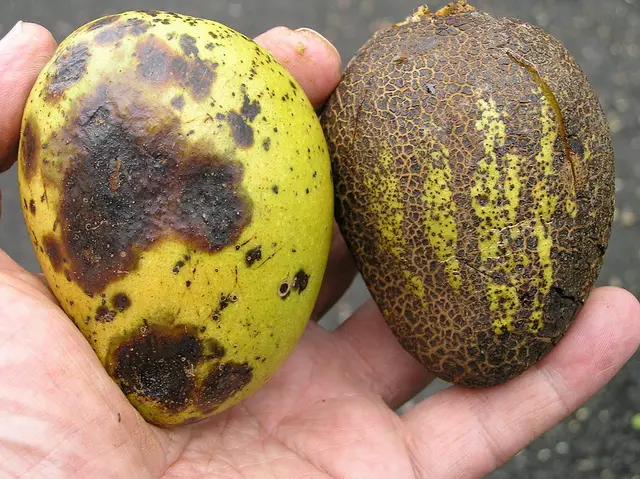Wheat berries are a great source of nutrition and can be added to many different meals such as salads, soups, and baked goods. If you buy a lot of wheat berries and want to keep them for a long time, it’s useful to know when they might start to go bad.
While wheat berries tend to last a while, their quality and freshness can be affected over time. In this article, we’ll take a look at how long wheat berries can be stored, and we’ll give you some helpful tips to make sure they stay in good shape for as long as they can.
Table of Contents
- What Influences How Long You Can Keep Wheat Berries?
- How Long Can Wheat Berries Be Stored?
- How to Tell If Wheat Berries Have Gone Bad
- Look:
- Smell:
- Taste:
- Tips for Long-term Storage of Wheat Berries
- Add Oxygen Absorbers:
- Freeze Them:
- Use Mylar Bags:
- Keep Your Wheat Berries Rotated:
- Frequently Asked Questions
- What’s the Best Way To Kill Bugs In Wheat Berries?
- Can Wheat Berries Be Frozen?
- Are Wheat and Wheat Berries The Same Thing?
- Why would you remove the wheat husk for Long-term storage?
- Wrapping Up
What Influences How Long You Can Keep Wheat Berries?
There are several important things that can change how long your wheat berries will stay good. Knowing about these can help you keep your wheat berries fresh for as long as possible.
Here are the main things that can make a difference in the lifespan of wheat berries:
- Air Exposure: If wheat berries are left open to the air, they can spoil. Air can make the oils in the wheat berries go bad, which makes them taste and smell different. You should keep wheat berries in containers that don’t let air in.
- Moisture: Moisture is another thing that can make wheat berries spoil. If wheat berries get wet, they can grow mold or start to smell musty. It’s best to keep them in a place where it’s cool and dry, without much moisture in the air.
- Heat: The temperature where you keep wheat berries is really important. You should store them where it’s cool and dry, and where the temperature doesn’t change much. If it gets too hot, the wheat berries might spoil, but if it’s too cold, they could get too hard to cook.
- Bugs and Pests: Little creatures can also cause trouble for your wheat berries. They can get into the stored wheat berries and mean you can’t eat them. To stop this, keep your wheat berries in containers that are sealed well and check now and then to make sure there are no bugs.
These things can all affect how long your wheat berries will stay fresh and tasty. It’s important to remember these when you store them.
How Long Can Wheat Berries Be Stored?
You can keep wheat berries for about a year if you store them the right way. To help them last, put wheat berries in a container that doesn’t let any air in. Keep this container in a place that’s cool, dry, and not in direct sunlight or by any heat. Also, look at them once in a while to make sure they’re not getting moldy or spoiled.
With really good storage, wheat berries can last up to 30 years, which is amazing! This means they’re a great food to keep in your cupboard for a long time.
How to Tell If Wheat Berries Have Gone Bad
To be sure that your wheat berries are good to eat, there are some signs of spoilage you can look for:
Look:
Bad wheat berries might change color, looking darker or lighter than they should. You might also see mold or other growths on them.
Smell:
A strong, bad smell, like musty or sour, might mean that the wheat berries are no longer good to use.
Taste:
Wheat berries that don’t taste right could be spoiled. If they taste bitter, sour, stale, or musty, it might be time to throw them out.
If you see any of these problems with your wheat berries, it’s best not to use them. Bad wheat berries can make you sick. Make sure to check your stored wheat berries often to keep them fresh and safe.
Tips for Long-term Storage of Wheat Berries
If you plan to keep wheat berries for a really long time, here are more tips that can help:
Add Oxygen Absorbers:
Putting oxygen absorbers in the container with your wheat berries can help take out any air, which will make the wheat berries last longer.
Freeze Them:
Freezing is a good idea if you have a big amount of wheat berries. Just put them in a container or bag that is made for freezing, and they can stay good for up to 5 years.
Use Mylar Bags:
Mylar bags are strong and good at keeping out moisture, bugs, and air. If you put wheat berries in a mylar bag with an oxygen absorber and seal it well, they can last for over 10 years.
Keep Your Wheat Berries Rotated:
It’s a good idea to use the oldest wheat berries first and then replace them with new ones. This helps stop them from going bad and means your wheat berries will always be fresh when you need them.
By following these storage tips, you can keep your wheat berries for a very long time. They’ll be a dependable and healthy choice to keep in your food storage.
Frequently Asked Questions
What’s the Best Way To Kill Bugs In Wheat Berries?
To get rid of bugs in wheat berries, put them in the freezer for at least 72 hours. This makes sure all the insects and their eggs are killed. When you take the wheat berries out of the freezer, let them warm up to room temperature before you use or store them again.
Can Wheat Berries Be Frozen?
Absolutely, you can freeze wheat berries to keep them fresh for a longer time. Simply put the wheat berries in a container that doesn’t let air in or a freezer bag and then freeze them. When frozen, wheat berries can be kept for as long as five years.
Are Wheat and Wheat Berries The Same Thing?
Wheat berries are just the whole wheat kernel, which means they have the bran, germ, and endosperm parts. But when people say ‘wheat,’ they could be talking about any part of the wheat plant, including the flour that’s made by grinding up wheat berries. Wheat berries are not processed like wheat flour, so they are in their natural whole food form.
Why would you remove the wheat husk for Long-term storage?
The husk on wheat berries has oils that can make the wheat berries go bad after a while. If you take the husk off before you put the wheat berries away for a long time, it can help them last longer and stay good. But you should know that taking off husks might also take away some of the natural nutrients found in wheat berries.
Wrapping Up
Wheat berries are a fantastic choice for any kitchen because they’re full of good nutrients and you can do a lot with them. To make sure they stay good for as long as possible, keep them in an airtight container in a cool and dry place where there isn’t much light or big changes in temperature.
Always check your wheat berries for signs of going bad and throw out any that aren’t good anymore. If you’re thinking about keeping them for a really long time, you could use things like oxygen absorbers, freeze them, or store them in mylar bags. It’s also a smart idea to use up some wheat berries and add new ones to your storage every so often to keep your stock fresh and ready to use.
By following these storage suggestions, you can make sure you always have wheat berries on hand. These grains are a nutritious choice that can be a staple in your home.









